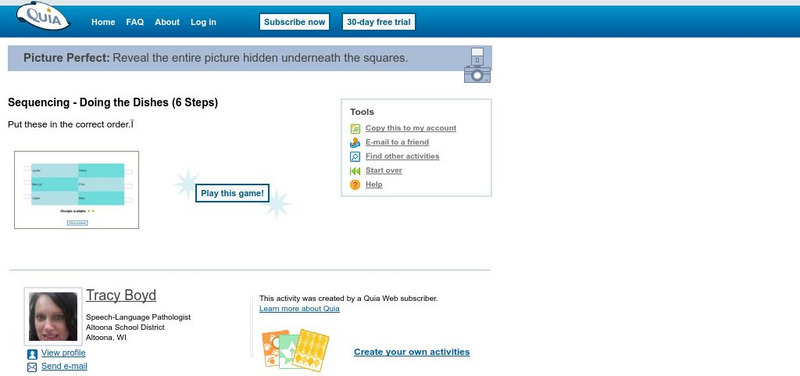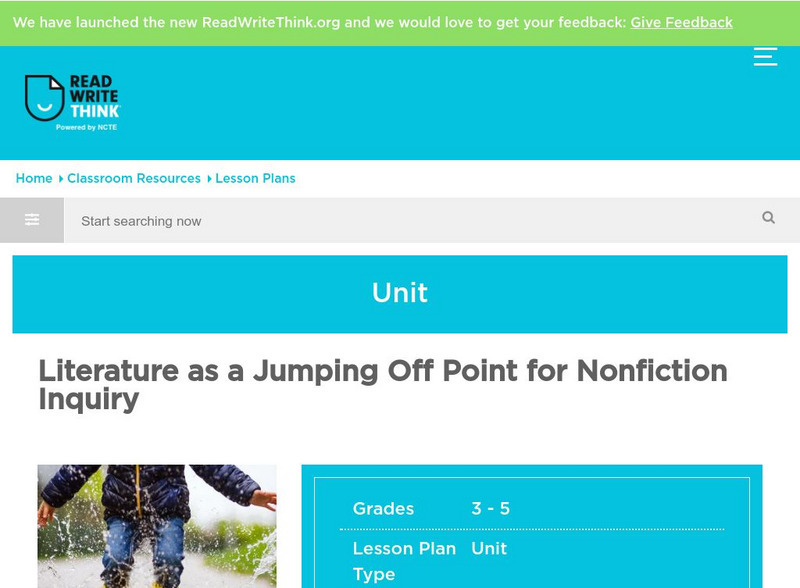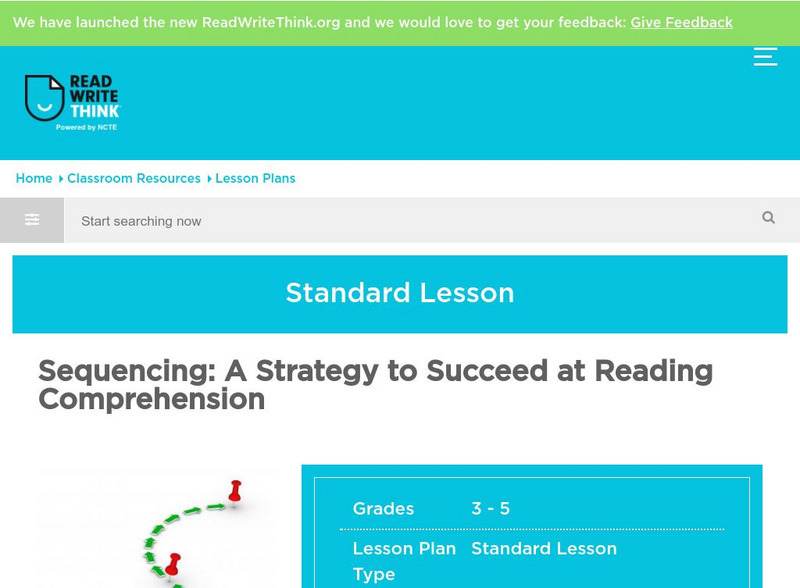Utah Education Network
Uen: One True Story, Told Two Ways
Analyze the different perspectives presented by two authors telling the same story.
Writing Fix
Writing Fix: Comparison/contrast Feet [Pdf]
A graphic organizer where students write similarities on one foot and differences on the other.
Writing Fix
Writing Fix: Responding to Comparison/contrast: 3 Voice Storyboard: Feeling [Pdf]
In this PDF lesson, students study topics on which people might have differing feelings; they then create three dialogue bubbles that represent three different viewpoints: one that loves the topic, one that dislikes it, and one with a...
Writing Fix
Writing Fix: Responding to Comparison/contrast: Compare/contrast Essay [Pdf]
This PDF lesson focuses on writing a comparison/contrast essay, which is a great format for helping young scholars think deeply about two ideas or concepts with multiple similarities and differences. This type of essay has four-parts -1)...
Writing Fix
Writing Fix: Now & Then
Inspired by Gene Barretta's Now & Ben: The Modern Inventions of Benjamin Franklin this fantastic cross-curricular activity has students comparing or contrasting a particular topic of history with how things are in this day and age.
Writing Fix
Writing Fix: Compare & Contrast as an Idea Springboard
In this Writers Workshop lesson, students read Frog and Toad stories by Arnold Lobel to learn about writing that compares and contrasts to things. This format can be used to write about many different topics in curricular areas and...
Curated OER
Mc Graw Hill: Part 1: Reading Literature: Show Understanding of Text
This quick lesson from the Common Core Literacy eHandbook teaches students what questions to ask and how to answer questions to show your understanding of literature.
Curated OER
Mc Graw Hill: Part 2 Reading: Informational Text: Compare Perspectives
Learn about the difference between a firsthand and secondhand accounts in a text on this site.
Education Development Center
Tv411: Summarizing
This activity asks students to read short paragraphs and select the statement that best summarizes each paragraph. It is part of a larger reading unit.
Curated OER
Mc Graw Hill: Part 2 Reading: Informational Text: Analyze Multiple Accounts
Learn about the different perspectives that can be used in an informational text.
Other
A Small Tall Tale From the Far Far North, by Peter Sis [Pdf]
This lesson plan is for the book A Small Tall Tale from the Far Far North and is designed for students in grades 2?4. Teachers can use the ideas here for history, literature, art, social studies, geography, research skills, and to spark...
Grammarly
Grammarly Handbook: Headings
This page focuses on the use of headings in a paper. The layout of the headings and subheadings should be determined before beginning the paper to make it easier to read and more attractive. Most important is to be consistent with...
Quia
Quia: Polygon Quiz
In this game, students are to number the steps for making cookies in chronological order to reveal a hidden picture.
Quia
Quia: Doing the Dishes
In this game, students are to read all nine steps to making homemade pizza and then number them in chronological order to reveal a hidden picture. Java is required.
ReadWriteThink
Read Write Think: Flying to Freedom: Tar Beach & the People Could Fly
Comparing and contrasting works and looking for underlying themes and messages are at the heart of this multicultural lesson plan. Provides links to several background resources, and suggestions for assessment.
ReadWriteThink
Read Write Think: It Doesn't Have to End That Way
Literary response and prediction are the focus of this lesson plan. Knowing story structure is an important skill for literary analysis, and this gives teachers a way to help learners develop this skill. Includes links to web resources,...
ReadWriteThink
Read Write Think: Literature in Nonfiction Inquiry
This lesson plan involves students working in groups after reading a work of literature to develop text sets. Included in the lesson plan is an overview, practice, objectives, resources, preparation, and more.
ReadWriteThink
Read Write Think: Using Picture Books to Teach Characterization
Contains plans for two or three lessons that ask students to examine characterization in picture books to use as models for their own writing. In addition to objectives and standards, this instructional plan contains links to sites used...
ReadWriteThink
Read Write Think: Zines for Kids Multigenre Texts About Media Icons
Contains plans for nine lessons that ask students to create multigenre zines for popular culture figures that include letter, persuasive, narrative, acrostic poetry, comic, and biography/autobiography writing. To accomplish this,...
ReadWriteThink
Read Write Think: Teaching the Compare and Contrast Essay Through Modeling
Contains plans for three lessons that teach young scholars how to write comparison contrast essays after modeling the form to them. In addition to objectives and standards, this instructional plan contains links to sites used in the...
ReadWriteThink
Read Write Think: Sequencing a Strategy to Succeed at Reading Comprehension
Contains plans for lessons that use the story of Paul Bunyan to teach about sequencing and order of events. In addition to objectives and standards, this instructional plan contains links to sites used in the lessons as well as...
ReadWriteThink
Read Write Think: Writing Abc Books to Enhance Reading Comprehension
Contains plans for four lessons that are adaptable to many texts that young scholars may be reading. Students analyze the text for literary elements such as characters, setting, figures of speech, and themes, and then publish their...
Curated OER
Mc Graw Hill: Informational Text: Compare and Contrast Authors' Presentations
Learn how informational text can be written from different points of view. Includes model texts with practice exercises.
Houghton Mifflin Harcourt
Harcourt: School Publishers: Test Tutor: Sequence
Students will increase their reading comprehension skills and understanding of story sequence by reading a passage of text and then answering questions about the order of events.




















